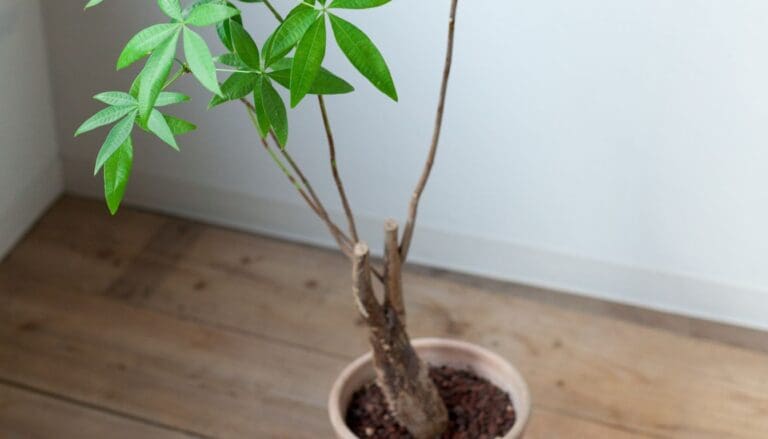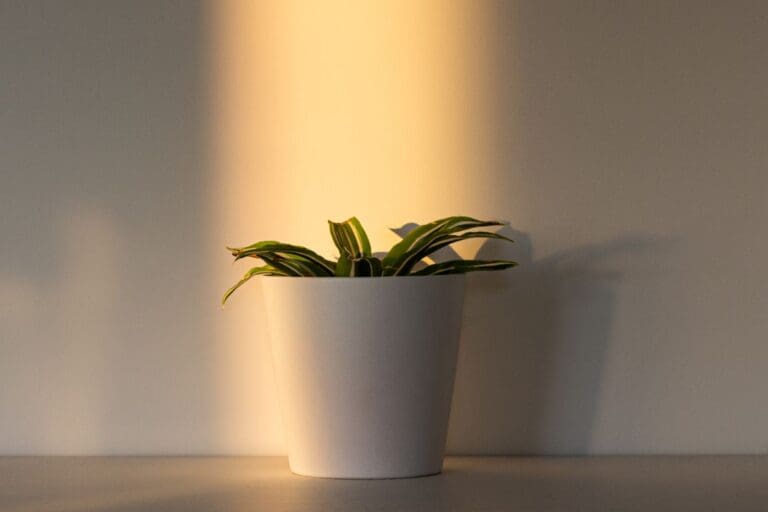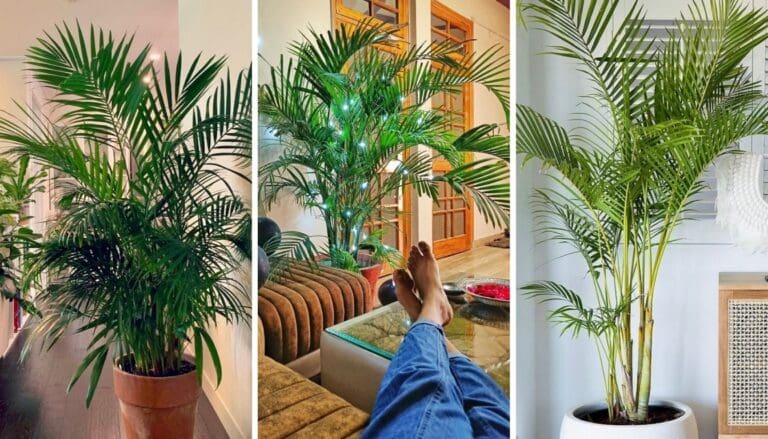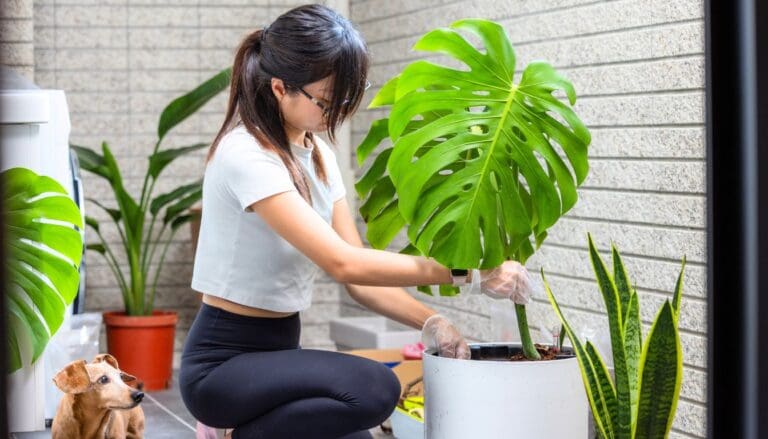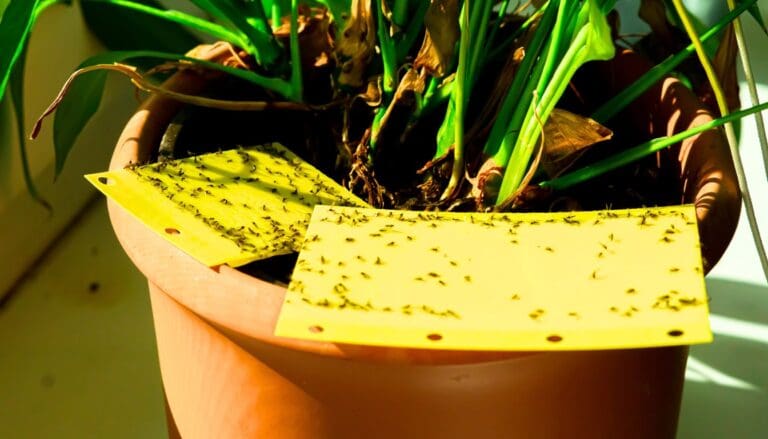How To Fix Overwatered Indoor Plant? (Signs, Causes & Solution)
One common problem in all indoor plants is overwatering. If you are lucky, you can notice early signs of overwatering in your plants. Taking precautions from that moment will help you save your plant and reduce the effort that you would need to put in otherwise.
However, If your plant is already overwatered then you need to take additional steps to save it from dying. So, in this article, we shall discuss how to fix overwatered indoor plants?
To save an overwatered indoor plant, you need to follow the following steps:
- Stop watering the plant and let the soil dry out.
- Examine the plant thoroughly and check for signs of root rot and other diseases.
- If the soil or pot has poor drainage, consider repotting the plant.
- Move the plant to a bright spot where it gets plenty of sun.
- Provide proper ventilation and maintain the appropriate temperature.
- Lower the humidity and stop misting.
- Keep an eye on pests and diseases.
There can be several causes behind overwatering, such as frequent watering, poor soil quality, no drainage holes, etc. You need to consider different things if you want to save an overwatered plant.
You must maintain a proper watering routine, improve the drainage system, water the plant based on the temperature, humidity, plant size, pot material, and many more.
If you are new to this problem, read this article to understand the reasons behind overwatering and learn how to save your indoor plants from overwatering issues.

Please note: Simplify Plants is reader-supported. Some links in the post are affiliate links and I get a commission from purchases made through links in the post.
Difference between overwatering and underwatering
Before you learn more about overwatering, you should understand the difference between overwatering and underwatering.
The symptoms of both problems can seem similar, so you need to understand the variations in their symptoms. Understanding the difference will help in the easy identification of the real problem.
Here is a table that will show you the differences between an overwatered and underwatered houseplant.
| Overwatering | Underwatering |
|---|---|
| Soft yellow leaves | Dry yellow leaves |
| Falling leaves | Droopy leaves |
| Brown spots on leaves | Brown leaf tips |
| Soft and puffy foliage | Crisp and brown foliage |
| Wilted leaves that won’t improve even after proper watering | Wilted leaves that will improve upon watering |
| No growth | Slow growth |
| Soggy soil with foul smell | Dry soil |
Also read: Overwatering Vs Underwatering Plants: Signs, Fix & More
What does an overwatered indoor plant look like?
If you regularly observe your plants, you will notice the initial signs of overwatering in your plants, such as soggy soil or yellow leaves. Yellow leaves are signs that the plant has started stressing due to overwatering. However, you can save your plant if you take steps quickly.
It is challenging to find out the initial signs of overwatering in some cases. Your plant will start showing more signs like brown tips and edges, no growth, or droopy leaves. Mostly the young, new leaves are the first to get affected.
If your indoor plant leaves feel wet along with yellow and droopy leaves, consider giving your plant a close look near the base. You might also get a foul smell from the soil. The stems at the base will feel soft and mushy.
If you try to remove some soil to observe the roots, you will find that they have become dark brown and mushy. This is the sign of root rot. In such a case, you need to treat your plant as soon as possible, or else it will die.
Signs of overwatering

The best way to check the signs of overwatering and confirm the issue is by taking the plant out of the pot. The white roots are the healthy ones. The roots that have turned brown and become soft, mushy, or dark brown are the unhealthy roots that have started rotting.
Some symptoms indicate that your indoor plant is suffering from overwatering. These signs are:
- Yellow leaves
- Soggy soil
- Brown tips and edges
- Dropping of both old and new leaves
- Leaves will have blisters. The condition is called edema.
- Slow or no growth
- Soft and puffy leaves and stems
- Mold growth on soil
- Foul-smelling soil, which confirms that the plant is suffering from root rot.
When the plants and the roots receive excess water, the air pockets get blocked due to excess water. The roots fail to breathe, lack oxygen, and start suffocating.
Besides this blockage and suffocation, the plant fails to absorb water and nutrients. Eventually, the leaves change their color from green to yellow; the tips and edges turn brown and develop soft damp spots on the surface.
Causes of overwatering
There are various reasons behind an indoor plant getting overwatered. But thankfully, you can save your plant and resolve the problem, provided you do it soon before anything serious occurs.
Watering too often
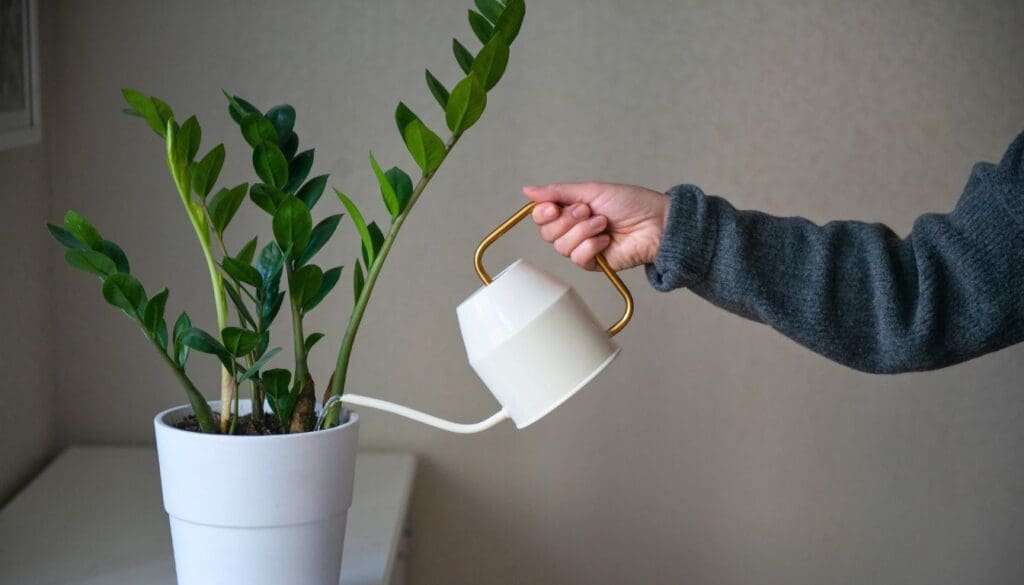
The most common cause of overwatering is frequent watering without checking the moisture level of the soil.
It happens when you care for a group of plants together. For example, watering Peace Lily once a week might not cause any harm, but watering a cactus frequently will harm the plant.
Follow a proper routine for watering. You can water your houseplant once a week thoroughly. It should keep the soil moist for the whole week.
For the next watering session, wait till the soil dries, at least the top ½ inch. You can keep more gaps in between the waterings for succulents like cacti.
Poor soil drainage

When the excess water does not drain out of the soil, it stays in the soil, creates a pool around the roots, and makes them wet.
For the ideal soil, prepare the potting mix with proper drainage and good water retention. Components like perlite, mulch, or sand can help improve the soil’s drainage by absorbing excess moisture.
Plant type
Some plants love frequent watering, whereas some prefer less water. Plants such as Peace Lily will choose to remain moist, but succulents such as cacti will like little drought.
While watering, the focus should be more on saturating the soil.
Research well about your plant and then come up with a better watering schedule.
Moreover, a giant plant will need more water than the smaller ones. If you water the smaller ones like the bigger ones, the former will get overwatered. So, consider the plant size and then water.
Temperature
Proper watering also depends on temperature. During the summers, the plants will need frequent watering. But following the same routine during winter will result in overwatering.
During winter, the soil takes a lot more time to get dry due to the cold climate. So, watering the plants less during the winters can save your plants from overwatering.
Moreover, some plants enter a stage of dormancy during the winters. Now, in such conditions, if you water them as you do in summer, they won’t absorb the water and will have overwatering issues.
Cut the frequency and amount of water compared to the summers and springs. This will keep your plant healthy and safe from overwatering.
Humidity

Most indoor plants need high humidity to survive, and you need to organize that for your plants. But you must remember that the rate of soil drying up slows down with high humidity.
Your plant might be already receiving enough moisture from pebble trays and humidifiers. If you water them repeatedly over this, they will get overwatered. You must water the plant less if you have organized high humidity for them already.
Pot material
Plastic or ceramic pots are non-porous pots. Watering the plants with fewer gaps sitting in these kinds of pots will get overwatered if you water too frequently.
Terracotta pots are the best for moisture-loving plants. Terracotta pots are porous, and thus the water will dry out quickly. Even if you make the mistake of frequent watering, the pot will help dry out the water due to its porous quality.
Pot size

You should always choose a pot based on the size of the plant. A big pot will need more soil, and when watered, the soil will remain wet for a long time.
A small plant will need a lot of time to absorb all that water from the soil. If the soil is wet, watering again over it will cause overwatering.
Always choose a pot size depending on the plant size. Choose a pot minimum 1 inch wider in diameter than the diameter of your plant’s root mass. That will be ideal for your plant. If your plant is a fast grower, opt for 4 inches wider pot.
Whatever pot you use, make sure it has drainage holes for easy flow out of excess water.
Also read: What Happens If You Put A Plant in A Pot Too Big?
How to fix an overwatered indoor plant?
The first and foremost thing to do to fix an overwatered plant is to stop watering. You should let the top inches of the soil dry out before watering. Especially some succulents like cacti will enjoy dryness more than moisture.
Not just the succulents, but even the moisture-loving plants also will not at all love soggy soil and will need dry topsoil for good, at least the top 1 inch. This will keep them away from pests and fungus.
You can check the moisture level by poking your finger 1 inch deep. Another way is by lifting the pot. With daily practice, you will immediately understand whether your plant needs water.
There are some ways to fix an overwatered plant:
- If you find water standing on the soil surface, tilt the pot a bit so that the water can fall off.
- Relocate your plant to a sunny area and keep it there for some time until the soil dries completely. But of course, not for a whole day under intense sun. If you feel that direct sun can be harmful, filter the sun rays. Keeping near a window will work.
- Stop fertilizing until the plant comes back healthy.
- Try to give the plant a little bit of warm temperature.
- Improve ventilation. Good airflow will help in drying out the soil faster. Also, aerate the soil so that the roots can get enough air and oxygen.
- Reduce the humidity level around your plant until the plant is healthy.
- If your plant has shown signs like yellow or brown leaves, remove the leaves from the plant.
- If soil is the main problem, you can improve the drainage by adding some mulch. Mulch will help in absorbing excess moisture.
Root rot

If your plant is suffering from overwatering for a long time, it will develop a disease called root rot.
In such conditions, the roots will change their color to dark brown. They will feel soft and mushy. The potting soil will release a very foul smell.
To save a plant from root rot, you will have to take the plant out and remove all the affected leaves and roots. If the disease progresses, the stems will also feel puffy and soft and will come off.
In such situations, drying out the soil or adding mulch will not help. If the root rot is in the initial stages, only getting rid of the affected parts from the plant and drying the soil can help. But if the situation is worse, you will also have to repot your plant.
Some probable signs of root rot are:
- Yellow leaves
- Falling leaves
- Wilting
- Small leaves and stunted growth
- The decline of plant’s health
- Brown spots on the leaves
- Black or dark brown roots
- Soft stems
- Molds
- Potting soil releases a foul smell
How to fix root rot?
You can treat root rot with the following steps.
- First, remove mold from the soil.
- Remove all the dead brown roots by cutting them off. Don’t disturb the good roots and root ball. Make sure to disinfect the tools before cutting.
- Prune off the affected leaves from the plant.
- If you want to use your old pot for repotting, you will need to sterilize them. For that, soak the pots in bleach water (1 part bleach and 9 parts water) for 10 minutes. Then wash it with soapy water or detergent. Dry it well.
- Wash the roots of the plant to remove all the old soil from them. But don’t harm the roots.
- Now use fresh soil. For good drainage, add ingredients like vermiculite, perlite, pumice, and sand. They will also help in good aeration. Some gardeners like mixing cinnamon as an anti-fungicide.
- If you want to use a new pot, make sure it is not too big and has proper drainage holes.
- Now repot your plant and water and drain well. Keep the plant in a sunny spot. Avoid intense rays.
- Resume watering very carefully. Water your plant once a week and avoid watering the other days. But check the moisture level and then water. Allow the topsoil to dry.
Propagation

Sometimes, the plant deteriorates so much that it becomes pretty impossible to save the plant. Even repotting can’t save it. In such conditions, if you want your plant back, you can propagate it.
If your plant has any healthy stems left, you can cut them off and propagate them. Take a cutting around 5-6 inches long, with enough leaf nodes. Now plant the cutting in soil, 1/3rd of it, in a container.
Cover the container with plastic for some days or weeks. You will see roots coming out. Allow them to grow a little bit. After that, transplant them to the pot with fresh soil and water them. Don’t stress them by overdoing anything.
Different plants will have different demands. You can even try propagating with leaf cuttings or propagating in water. The one I mentioned is a general example. For your particular plant, consider researching and then propagating.
How long will the indoor plants take to recover?
There is no definite answer for this. Some plants will take more time, while some will take less. Generally, if proper care is taken, it should take one week for recovery.
Recovery time from overwatering depends on certain factors:
Amount of damage
Recovery depends on how much damage the plant is undergone. If your houseplant has been experiencing overwatering for some time, you will have to fix the plant and make it worth recovering. The plant might even take a lot of months to come back.
Even if you remove the affected portions of the plant from the plant, it will take a long time to resolve.
Plant resilience
If your indoor plant is hardy, it will come back from the damage, provided it gets proper care. Significantly, the fast-growing plants are bound to bounce back healthy quicker than the slow-growing plants.
For example, shrub plants will take a lot of time, like years, to recover, whereas a robust tropical plant may recover within weeks or months.
Time of the year
Most houseplants face a period of dormancy during the winters. They don’t grow or flower much. So, during the summers, an overwatered plant recovers more quickly than during the winters.
When a plant takes a lot of time to bounce back during winters, there is nothing to stress about. It is normal. Just provide them with their proper care, be patient and wait for your plant to be healthy.
Treatment and care
With proper care and treatment, fixing an overwatered plant without any delay will increase the plant’s recovery speed rate.
How can you avoid overwatering?

Instead of fixing overwatering, you can try not to overwater your plant by following some preventive measures:
- Do not water your plants until the half-inch or 1-2 inch of topsoil dries up. Wait before watering.
- Check whether the drainage holes are doing their job or not. Lift the pot to confirm the flowing out of extra water.
- Use a good drainage soil mix for your plants.
- Constantly check the moisture level. You can use a moisture meter. Or, you can poke your finger inside the soil to feel the moisture.
- Consider deep but infrequent water. Water more during the summers and limit the amount during winters.
- Also, consider outside factors. If your plant is placed under a bright sunny area, water more. If they are in a low light zone, give less water.
- If you have organized high humidity for your plants, you can water them less.
Final words
If you are lucky enough to find initial overwatering signs, you will be able to save the plant before anything worse happens. For that, you will need to check your plant regularly, consider following proper watering routines and avoid watering until the soil dries up.
You can follow up on a calendar and mark the dates of watering. This will help you to follow up with a proper watering routine.
Water indeed plays a significant role in keeping your indoor plants healthy. But excessive water will only harm the plants, and if not treated within time, your plants can end up dying. So it is better not to overdo watering to keep your houseplants safe and healthy.
Recommended Garden Supplies
| Product Image | Our Recommended Gardening Supplies | Check Offers! |
|---|---|---|
Top Top
Top
Top
Top
Top
Top
Top
Top | rePotme Houseplant and Tropical Classic Potting Soil Mix | Check Offer On Amazon |
 Top
Top
Top
Top
Top
Top
Top
Top | Espoma Organic Indoor Plant Food | Check Offer On Amazon |
 Top
Top
Top
Top
Top
Top
Top
Top | GooingTop LED Grow Light 6000K Full Spectrum Clip Plant Growing Lamp | Check Offer On Amazon |
 Top
Top
Top
Top
Top
Top
Top
Top | Soil Moisture Meter | Check Offer On Amazon |
 Top
Top
Top
Top
Top
Top
Top
Top | Govee Hygrometer Thermometer, Bluetooth Enabled! | Check Offer On Amazon |
 Top
Top | LEVOIT Humidifiers for Large Room(Best For Plants) | Check Offer On Amazon |
 Top
Top
Top
Top
Top
Top
Top
Top | Upgraded DIY Automatic Drip Irrigation Kit, 15 Potted Houseplants Support | Check Offer On Amazon |
 Top
Top
Top
Top
Top
Top
Top
Top | Stainless Steel Heavy Duty Gardening Tool Set | Check Offer On Amazon |
 Top
Top
Top
Top
Top
Top
Top
Top | Bonide Insecticidal Soap | Check Offer On Amazon |
 Top
Top
Top
Top
Top
Top
Top
Top | Bonide 32 oz Spray Neem Oil for Organic Gardening | Check Offer On Amazon |
 Top
Top
Top
Top
Top
Top
Top
Top | Garden Safe Fungicide | Check Offer On Amazon |

